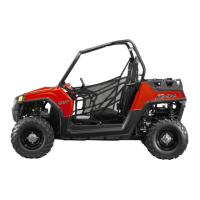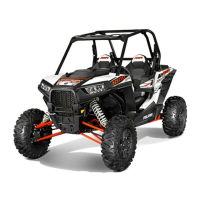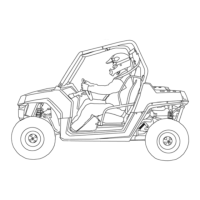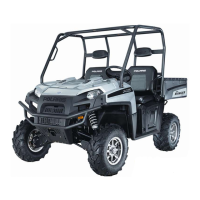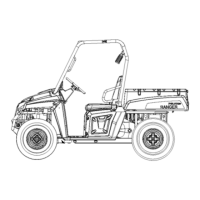9.19
BRAKES
9
REAR BRAKE DISC
Disc Inspection
1. Visually inspect disc for scoring, scratches, or gouges.
Replace the disc if any deep scratches are evident.
2. Use a 0-1” micrometer and measure the disc thickness at
eight different points around the pad contact surface.
Replace disc if worn beyond service limit.
3. Mount a dial indicator and measure disc runout. Slowly
rotate the disc and read total runout on the dial indicator.
Replace the disc if runout exceeds specifications.
Disc Replacement
1. Remove rear brake caliper (see “REAR CALIPER
SERVICE”).
2. Remove wheel hub cotter pin, castle nut and washers.
3. Remove the hub assembly from the vehicle and remove the
(4) bolts retaining the disc to the hub.
4. Clean the wheel hub mating surface and install new disc on
wheel hub.
5. Install new bolts and torque to 28 ft. lbs. (38 Nm).
6. Install wheel hub assembly, washers, and castle nut.
Torque castle nut to 80 ft. lbs. (108 Nm) and install a new
cotter pin.
7. Install rear brake caliper (see “REAR CALIPER
SERVICE”). Follow the bleeding procedure outlined
earlier in this chapter.
8. Field test unit for proper braking action before putting into
service. Inspect for fluid leaks and firm brakes. Make sure
the brake is not dragging when pedal is released. If the brake
drags, re-check assembly and installation.
Brake Disc Thickness
New: .188” (4.76 mm)
Service Limit: .170” (4.32 mm)
Brake Disc Thickness Variance
Service Limit .002” (.051 mm)
difference between measurements
Brake Disc Runout
Service Limit .010” (.254 mm)
Measure
Thickness
Front
View
Side
View
CAUTION
Always use new brake disc mounting bolts. The
bolts have a pre-applied locking agent which is
destroyed upon removal.
Cotter
Pin
Washers
Nut
(4) Bolts
28 ft. lbs.
(38 Nm)
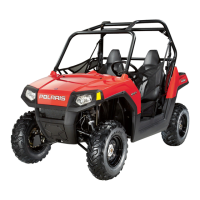
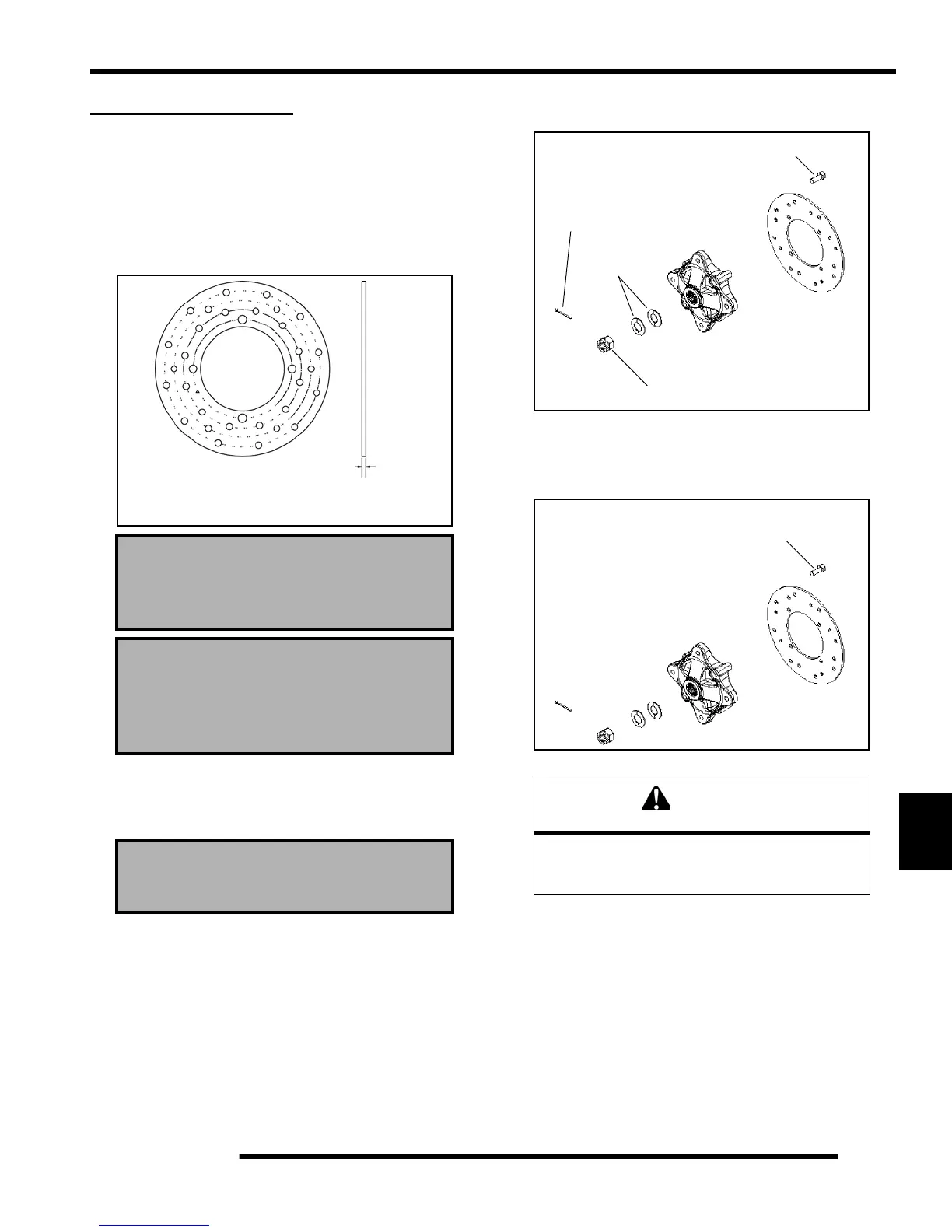